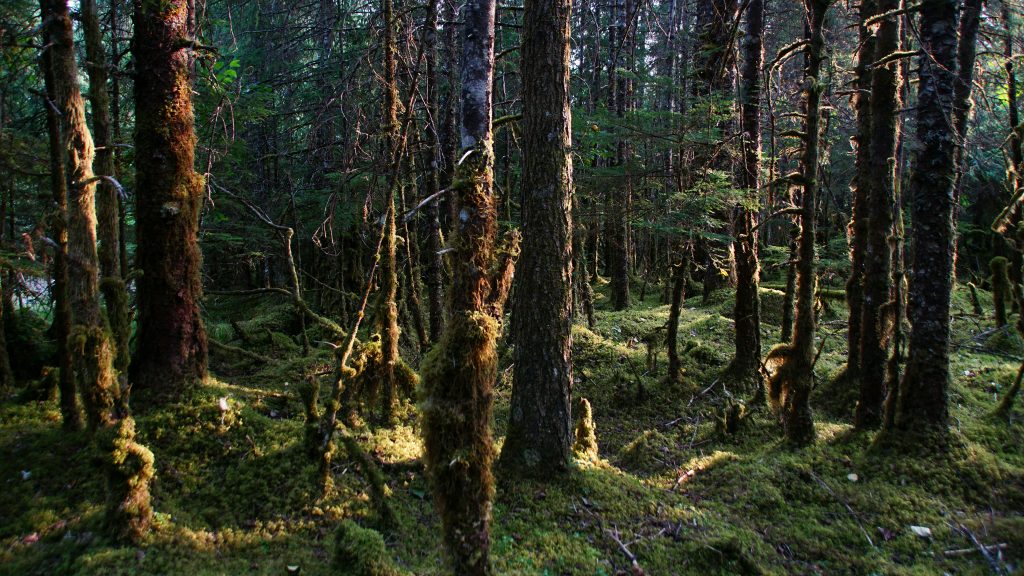There are many issues to watch in 2020 and some that have been developing for decades are about to make big changes. One of those to follow up on is the constant fight between the protection of land and present communities versus economic interest and commercial development. Who does land belong to? Governments? Constituents? The plants and animals that also reside there? The debates seemingly never cease. However, this year there are some serious legislative measures being taken to further commercial development, a desire thrown in even starker contrast by a devastated economy and the pressure of upcoming elections.
In January 2001, President Clinton proposed the Roadless Area Conservation Rule, after an outpouring of public support. According to Earth Justice, “more than 600 public hearings were held around the nation, and the public provided more than 1.6 million comments on the Rule – more comments than any other rule in the nation’s history.” Although it was delayed due to the intricacies of transitioning from the Clinton Administration to George W. Bush’s Administration, in 2002 the Department of Agriculture officially established “prohibitions on road construction, road reconstruction, and timber harvesting in inventoried roadless areas on National Forest System lands.” The Rule is meant to protect public lands across the entire nation from being cut down and conserve the nature and life found in these forests to ‘safeguard wildlife, water supply and recreation opportunities’.

But recently, Alaska and Utah have both wanted to follow in the footsteps of Idaho and Colorado to form state-specific roadless rules that exempt them from the federal law by strengthening protection in some areas and allowing development in formally restricted areas. If two states have already done this, why is it so controversial in Alaska?
Under the 2001 Roadless Rule, the largest intact temperate rainforest on the planet, the Tongass National Forest in Alaska, is protected from the timber industry that once endangered salmon and deer habitats. Not only is this forest famous for its glaciers, bears, sea lions, salmon, and astonishing amounts of carbon storage, but it also contains and preserves some of the purest water in the nation. The idea of state-specific legislation would be to open some of this forest to development, some to renewable energy, but most to timber and mining. After witnessing the opening to commercial development of over 400,000 acres collectively in Colorado and Idaho, many communities in Alaska and environmental groups are worried that the same could happen to Tongass.
While logging used to big business in this part of Alaska, the Tongass was pretty devastated by the industry and timber companies had to slow down in the late 1900s. Timber industries still have some hold in the region, but they are now less profitable than the tourism, fisheries, and recreational industries that function there. That’s why many Alaskan communities, like Sitka, Prince of Wales Island, Klawock, and Tenakee Springs, are attending committee hearings to keep the Roadless Rule.
As Alaska Public Media reported, “Clarice Johnson’s grandfather was a logger during the heyday of old growth timber, when cutting down old trees was good economics. Johnson told the committee that times have changed. ‘Eliminating the Roadless Rule will not bring back the logging industry. It will only endanger the other drivers of the Southeast economy,’ Johnson said.”
Very active in this struggle are the indigenous communities that have lived in Southeast Alaska for generations, the Tlingit, Haida, and Tsimshian peoples. In March 2019, an Indigenous Alaskan women’s delegation traveled to Washington D.C. to present why the Tongass National Forest should be protected.
Adrien Nichol Lee, the President of the Alaska Native Sisterhood Camp 12, explained in an interview with Earth Justice, “Creating a state-specific Roadless Rule in Alaska will undermine one of the most important ways we Tlingit can protect the Tongass forest, which is our traditional territory. We have lived off these lands in a sacred and caring way for generations, and we want to continue to live in our traditional ways for our children and our children’s children. Corporate logging cannot come before we the people. We also know the Tongass is important to help stop climate change for everyone around the world.”

This debate has been roaring since 2003 with the state of Alaska preparing for development for years. They continued filing for this exemption but continued to be delayed throughout the Obama administration. At one point, the courts decided that this federal Rule could no longer be challenged by Alaska, but that ruling was overturned soon after. In October 2019, with the support of the Trump Administration, the U.S. Forest Service, who carries out the Roadless Rule, announced the repeal of this legislation. Over 9 million acres of the Tongass will be opened for bulldozing and clear-cutting.
This struggle continues even as the Alaska Arctic National Wildlife Refuge (ANWR)’s 1.6 million acres of coastal plains are being made available to oil and gas drilling. There is large public outcry there as well with 67% of registered voters opposing drilling in the Refuge (either strongly or somewhat), according to Yale’s Program on Climate Change Communication.
Despite the passage of these legislative projects, Southeast Alaska Tribal Governments, Alaskan businesses, and environmental agencies continue to challenge their governments to protect the Tongass National Forest and the rest of Alaska’s wildlife, waters, ecosystems, and communities. To stay updated and involved on these issues, check out Yale’s Climate Change Communication, Earth Justice, and the US Department of Agriculture Forest Service.
 Food
Food Farmers
Farmers Sustainable Living
Sustainable Living Living Planet
Living Planet News
News